Wings Over Europe
Exploring Military Aviation Movements Using ADS-B & OSINT
Today we’ll be using ADS-B to take a quick look at random military aircraft movements in Europe. While we’ve taken this using open source methodology, we wont be direct posting without considering OPSEC. While its reasonably safe to assume that anything using ADS-B to beacon a position is happy to be tracked, in any open source article we still must consider the consequences of giving up too much information during an analysis. Our Snapshot was taken around a week ago, and during this time we noted quite a few platforms of interest during our browsing. Lets take a look and see what we found.
Information Sources
When conducting our information gathering we must consider our available information sources in regards to how we best present the information for analysis. With this said, we really only have a couple of options for figuring out how we can both find and subsequently track our platforms of interest.
- Direct Reception & Detection
Direct reception is possible providing you’re within reasonable range of the area of interest. This entails using an RTL-SDR or similar device to receive ADS-B transmission directly and then plot then on a map. This can be a good option to overcome censoring and filtering of traffic information, as some aircraft types may be subject to filtering and not directly appear on the network. However the down side of this is that it generally means line of site only, depending on the capabilities of your receive station. This means stations in Poland, Romania and the like will easily be able to receive packets of interest while stations outside of that area will have to rely on a third party app to show this information to them via Web Browser.
2. Flight Tracking & ADS-B Apps or Websites
Whilst flight tracking apps started as the sole realm of plane watchers, radio amateurs and organised travelers, today you’ll find flight trackers being used by many people in their day to day interests and activities. The proliferation of FlightRadar24 and FlightAware means tracking stations now maintain good coverage over large parts of the globe, providing fight tracking and ADS-B information to anyone with an internet connection and the ability to download an app. You’ll also find instructions and even software images that enable you to setup a tracking station quickly and easily, feeding it to the provider of your choice. However when you’re tracking military platforms, we tend to prefer ADS-B exchange, as it has a traffic filter that will show only military traffic. This means assessing current movements becomes quick and easy. We’ll use ADS-B exchange today, so we’ll show you how to do this within your browser. Let’s check it out. First, you’ll need to bring up your own version of adsb exchange which you can find here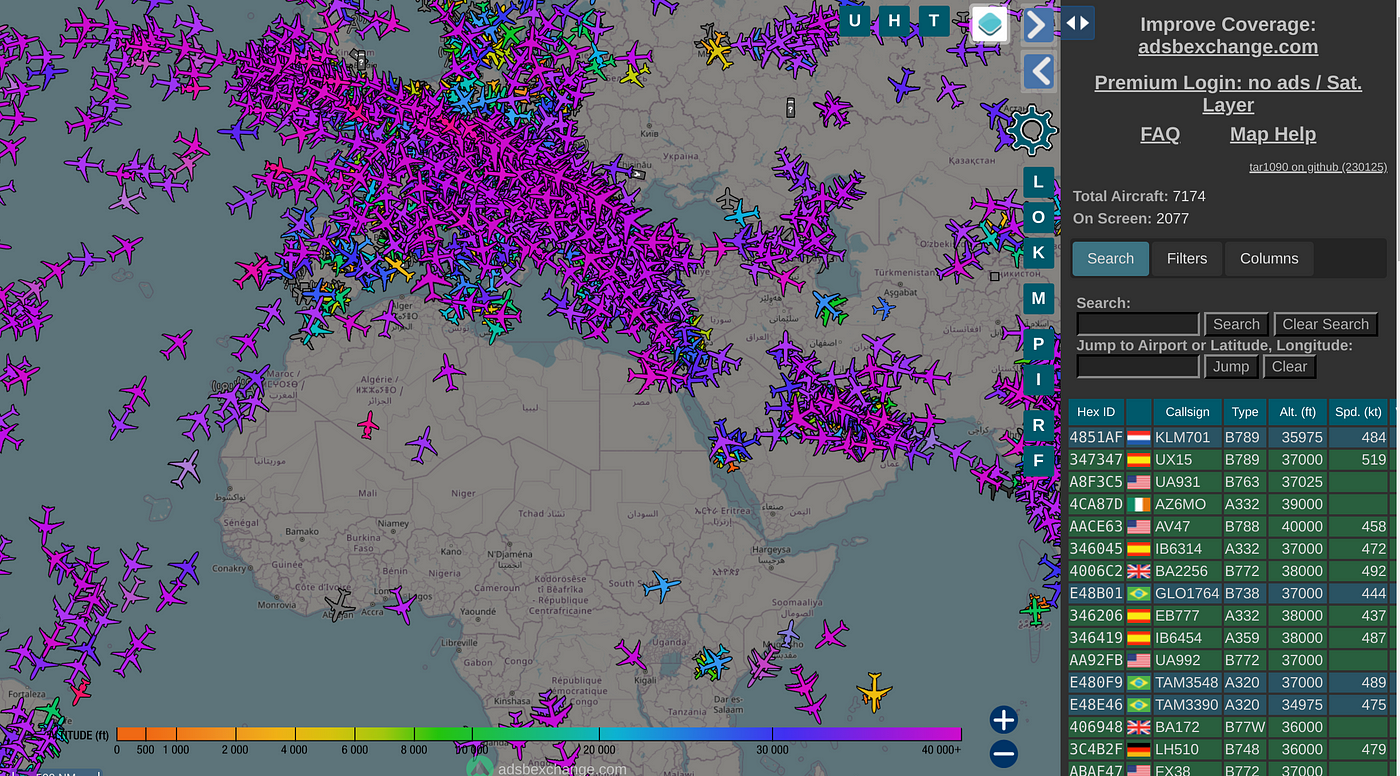 A regular day in the skies. Some 2000 odd aircraft pictured.
A regular day in the skies. Some 2000 odd aircraft pictured.
Next we’ll need to filter by type so we can see only military traffic. We can do this by clicking a tab in the top of the screen.
Move to the top where we see tabs for “U”, “H” and “T”. Select “U” to show only military traffic.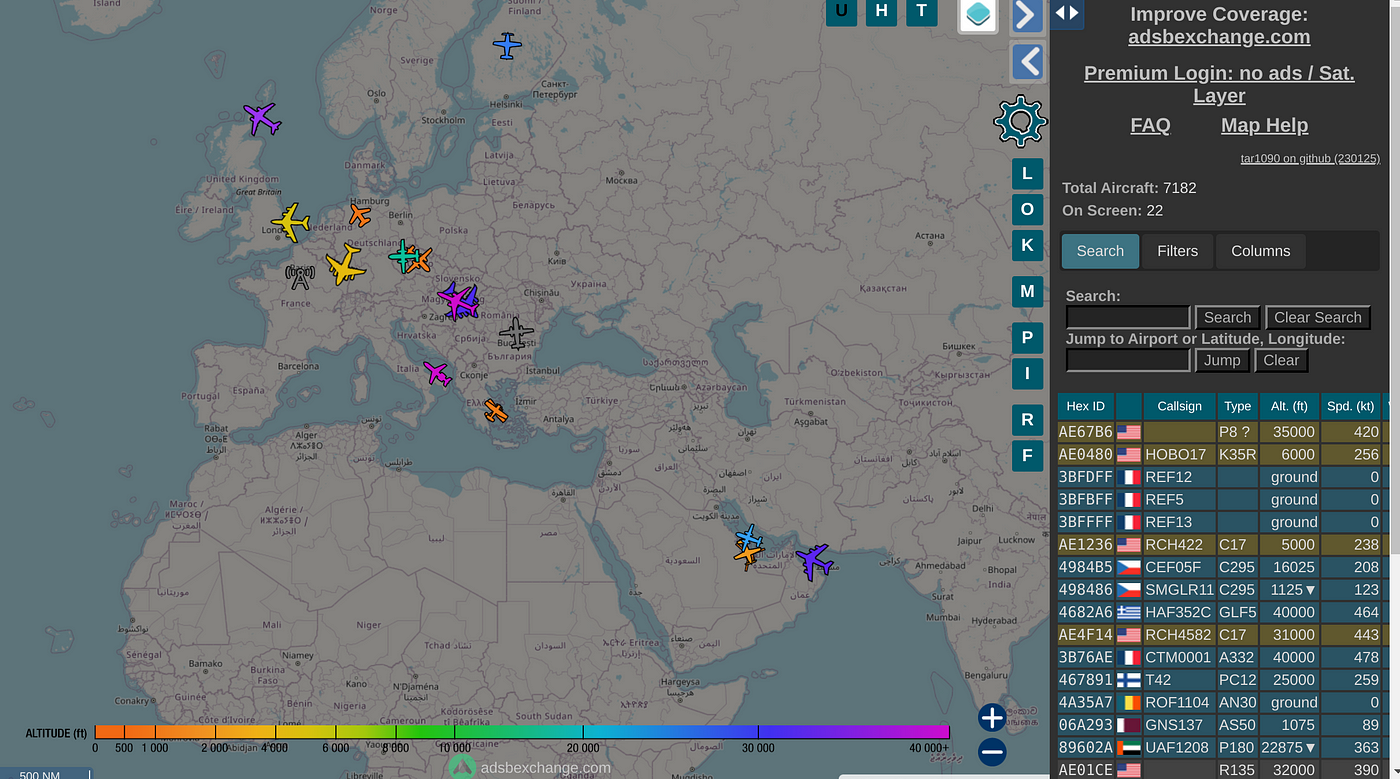 Much Cleaner. We now see 22 air frames spread across a wide portion of Europe.
Much Cleaner. We now see 22 air frames spread across a wide portion of Europe.
We can immediately see that’s a lot clearer, with only a few platforms now visible. However we can clearly see platforms of interest within our screen shot, with both a P8 Poseidon and RC-135 visible, transmitting limited position information. Lets see what else we can find.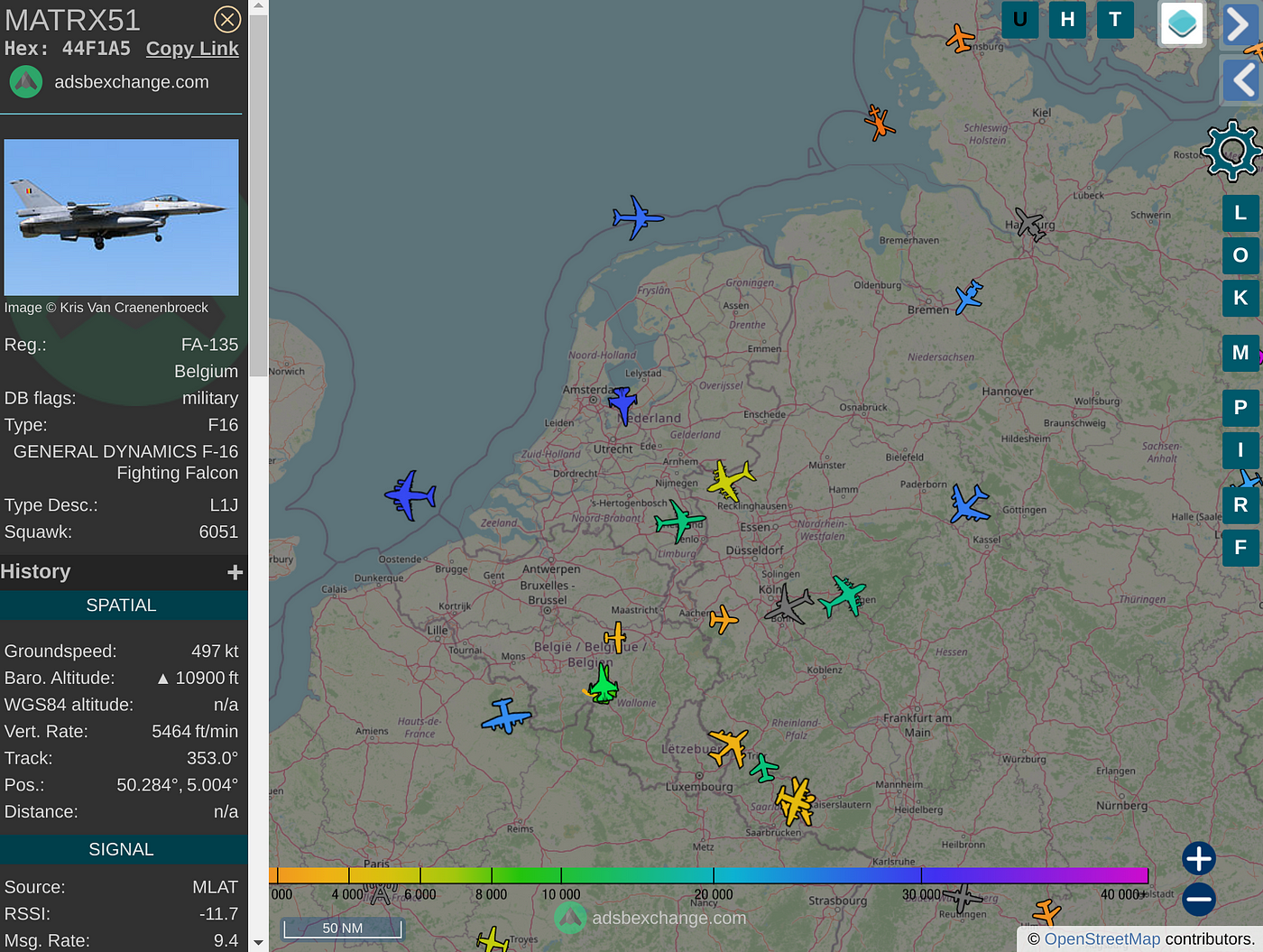 Matrix 51. Belgian Air force F-16
Matrix 51. Belgian Air force F-16
Here we get our first bit of fast jet traffic. We can see Matrix 51. He’s an F-16 from the Belgian Air Force. Given the F-16 is prolific in Europe, its no suprise to see at least one active during our review.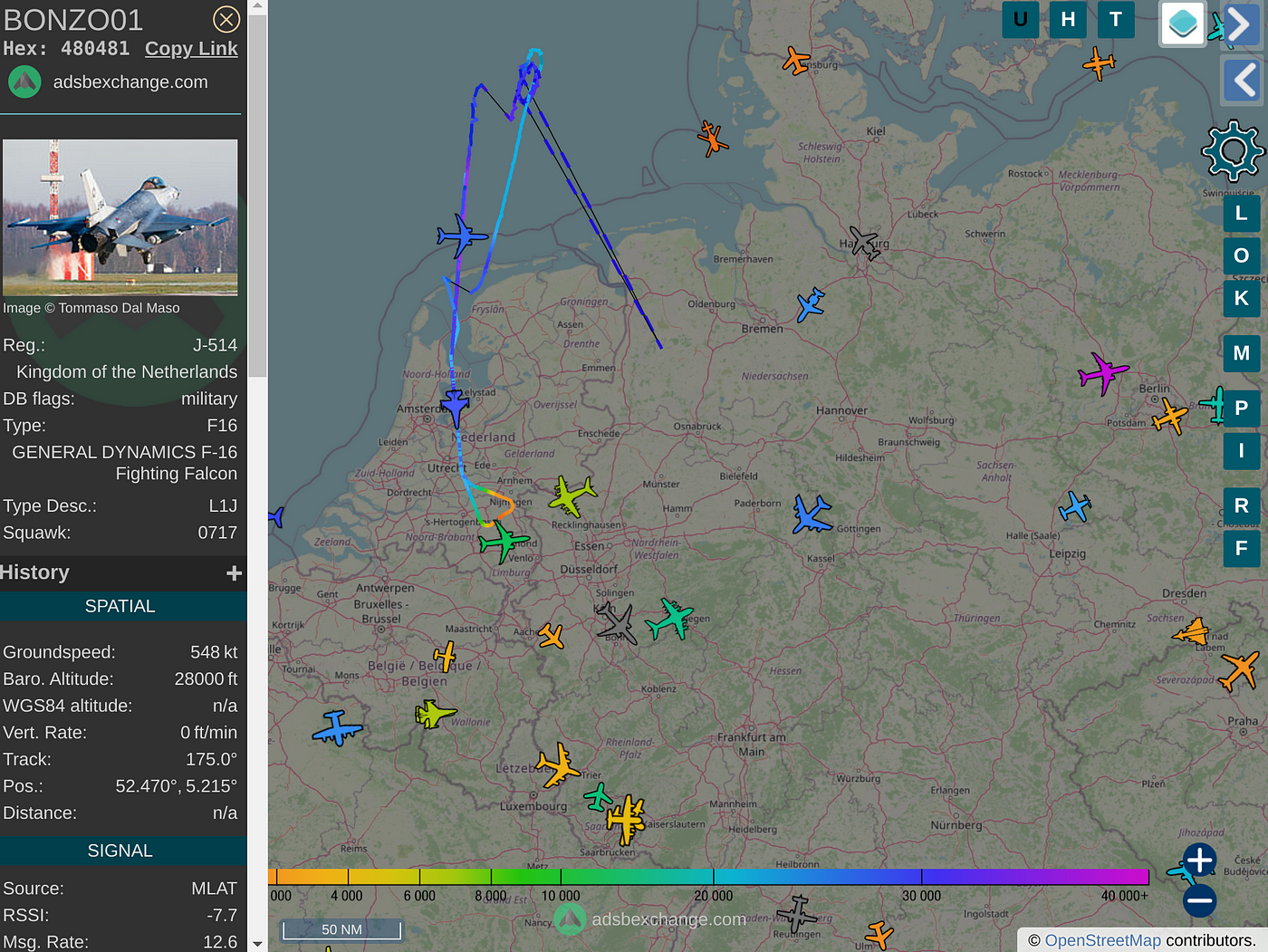 Netherlands Air force F-16 BONZO-01
Netherlands Air force F-16 BONZO-01
With this Jet we can see a longer footprint, and a good part of his historical activity. This looks to be returning from a flight that included a good chunk of feet wet time. We mentioned before that the F-16 is heavily represented in Europe. This will change over the next few years however, as countries that are scheduled to replace their F-16’s gain IOC with their stealthy F-35 replacements.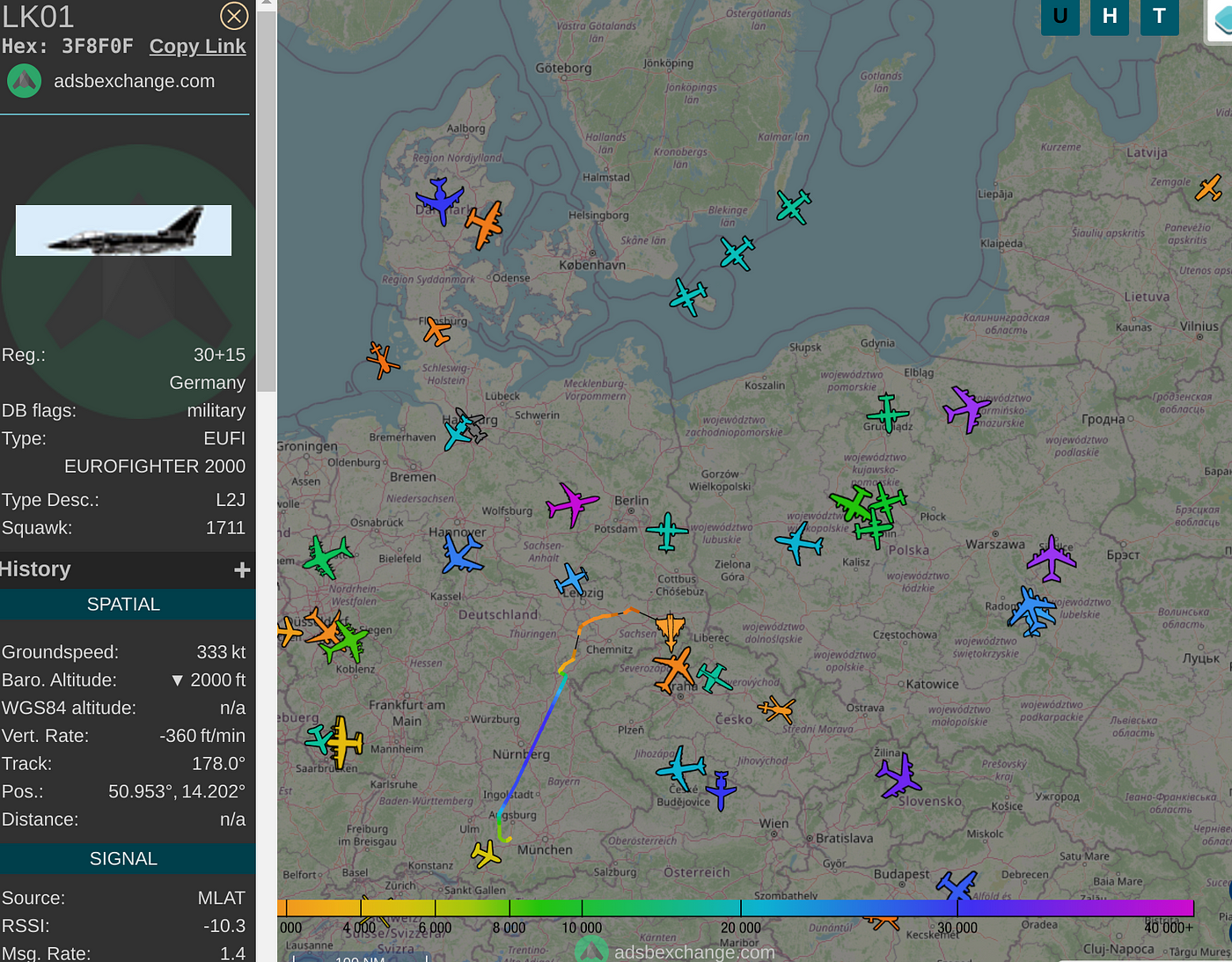 Luftwaffe Eurofighter Typhoon.
Luftwaffe Eurofighter Typhoon.
Moving along, we see the Luftwaffe representing, with one of their Eurofighter Typhoons popping up via ADS-B. Whilst we aren’t entirely sure what he was up to, its worth mentioning that both USAF and NATO electronic intelligence platforms were airborne nearby. We’ll take a look at the first one now.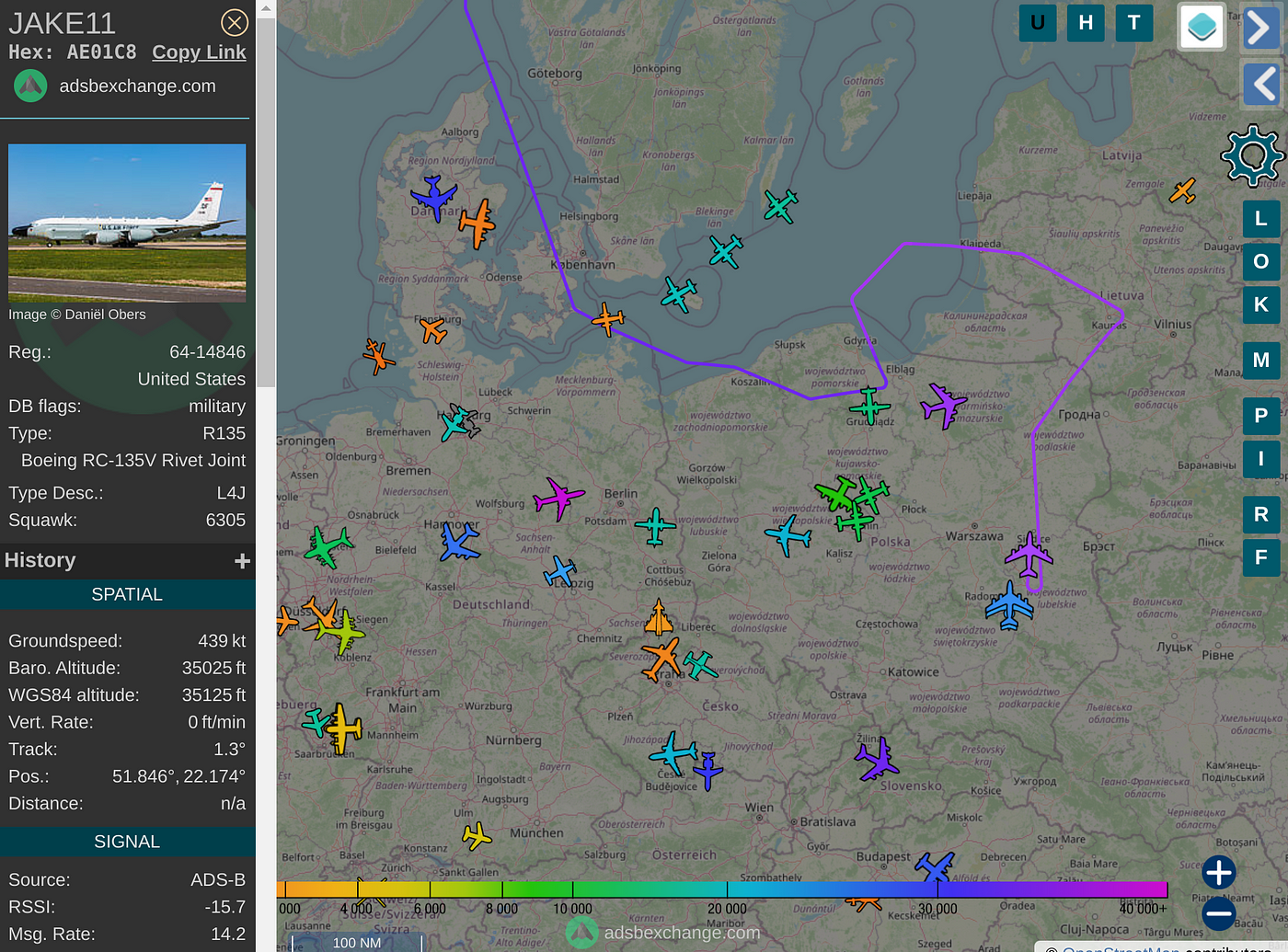 Boeing RC135 Rivet Joint flying as JAKE 11. We saw Jake11 before in a much earlier article we wrote
Boeing RC135 Rivet Joint flying as JAKE 11. We saw Jake11 before in a much earlier article we wrote
Here we see the first of the ELINT and SIGINT platforms, with the discovery of the Boeing RC-135 Rivet Joint. For those unaware of the Rivet Joints role, we’ll get chat GPT to give us a quick explanation, but for those who are, you’ll notice the aircraft has already started the familiar racetrack pattern used when on station.
INPUT: What is the Boeing RC-135 Rivet Joints role.
OUTPUT: The Boeing RC-135 Rivet Joint is a reconnaissance aircraft used by the United States Air Force (USAF) for intelligence gathering and electronic surveillance missions. Its primary role is to collect signals intelligence (SIGINT) and provide valuable information to decision-makers and military commanders.
The RC-135 Rivet Joint is equipped with a variety of advanced sensors, receivers, and computer systems that enable it to intercept and analyze communication signals, including radio, radar, and other electronic emissions. It can detect, locate, and record electronic emissions from various sources, such as enemy communication systems, air defense radars, and other electronic devices.
The aircraft’s main mission is to gather information on potential threats, such as enemy military activities, weapons systems, and communications networks. It can detect and track enemy radar systems, identify their frequencies, and analyze their capabilities. This information is crucial for situational awareness, target identification, and assessing enemy capabilities.
The RC-135 Rivet Joint can operate in different environments, including over land and sea, and it has the capability to fly at high altitudes for extended periods, allowing it to cover large areas and gather intelligence over long distances. It often operates in conjunction with other intelligence, surveillance, and reconnaissance (ISR) assets to provide a comprehensive picture of the battle space.
Overall, the RC-135 Rivet Joint plays a critical role in the collection and analysis of signals intelligence, providing valuable information for military planning, decision-making, and intelligence support to both conventional and special operations forces.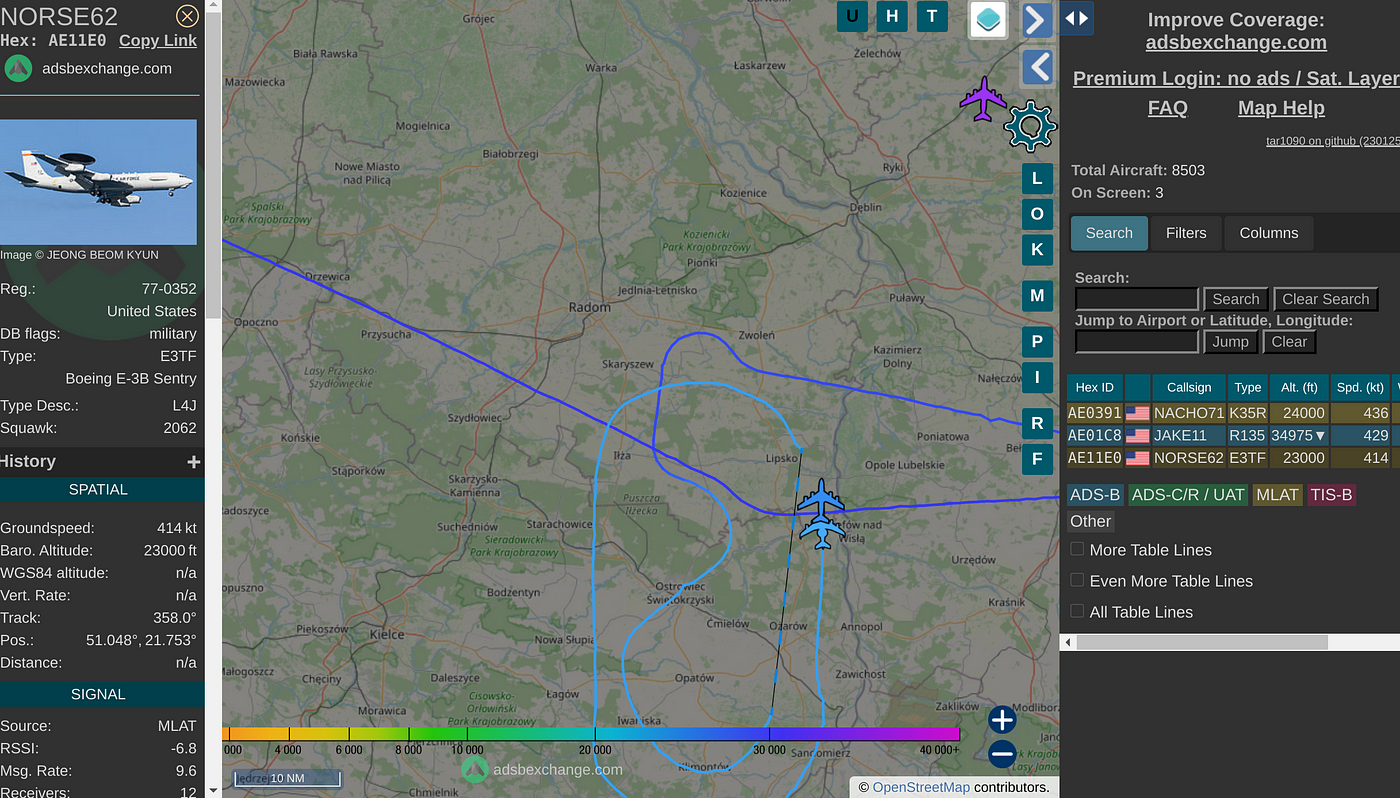 NORSE62, a USAF E3 Sentry.
NORSE62, a USAF E3 Sentry.
Moving along to the south we see NORSE62 an US Air Force Boeing E-3 Sentry. Based on the 707 airliner the sentry has also been used by NATO and the United Kingdoms Royal Air Force, and is an Airborne Warning and Control aircraft, or AWACS for short. Despite heavy upgrades, the sentry is an aging platform that is expected to be replaced by the 737 based, E-7 Wedgetail. The E7 is currently operated by the Royal Australian Air Force. AWACS platforms are a force multiplier and are considered critical in regards to monitoring the airspace and aircraft deployments within a conflict zone. We found this shot of NORSE62 particularly interesting as it looked like he was about to take on gas from NACHO71, a KC-135R tanker. 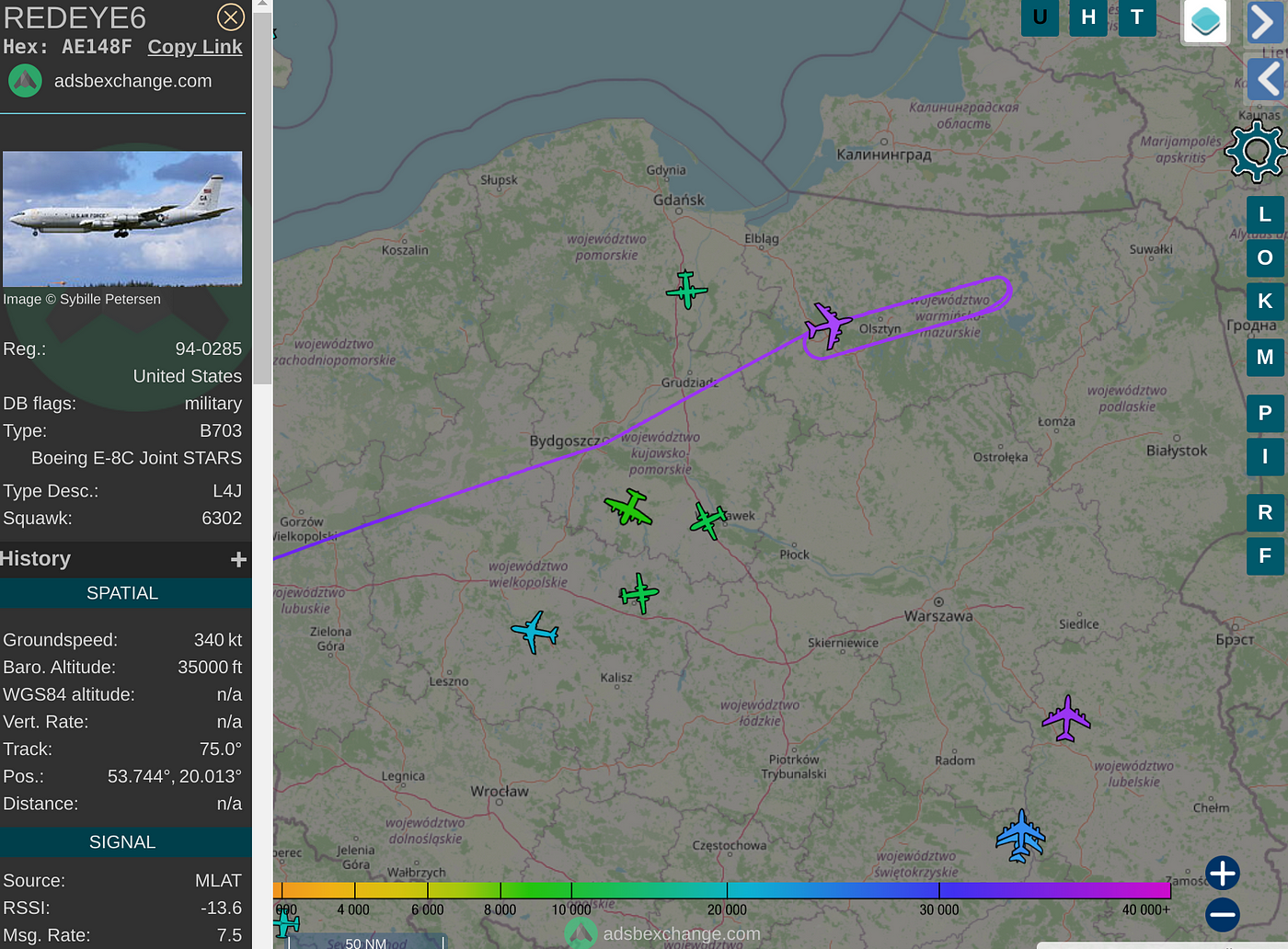 REDEYE6. Boeing E-8 J STARS. We’ve seen REDEYE6 in previous articles we’ve written.
REDEYE6. Boeing E-8 J STARS. We’ve seen REDEYE6 in previous articles we’ve written.
Our last platform of interest is another older, 707 based platform. The E-8 J Stars. Another ELINT Platform, the J Stars carries a large, sideways looking airborne radar (SLAR). This radar has the ability to look into territory and airspace far off to the side. We can assume that this platform is gathering information regarding the Russian Invasion of Ukraine and we can see its on station, with the altitude of 35000ft and racetrack pattern giving it the ability to use its sensors to look deep into contested territory.
So we’ve seen 3 separate flights of fast jets, and 3 different ELINT/SIGINT platforms (albeit all based on the 707). Whilst its reasonable to consider that many military assets fly without providing a position we hope that after today’s article you’ve been able to see that by using the right sources, at the right time we can still see many platforms of interest during day to day operations.
Lastly if you’d like to build you’re own flight tracking station however lack the ability to set one up we’d like to remind you that in part 3 of our multi part series called SDR The Radio Spectrum & The world around us that we’ll show you how to do just that. Follow us on medium or telegram to receive our latest content updates direct to your device.
For Updates on Medium click here
To follow us on Telegram click here











































